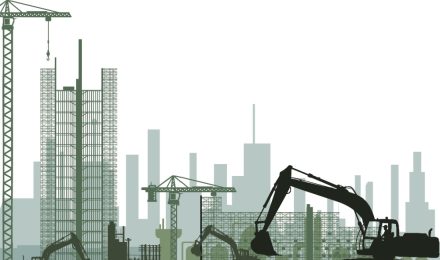Why the Environment Matters
The environment is not just a backdrop to our lives, but an integral part of it. It provides us with the air we breathe, the water we drink, and the food we eat. Without a healthy environment, we cannot survive or thrive as a society. Unfortunately, human activities have put immense pressure on the environment, leading to pollution, deforestation, and climate change. But we can make a difference by taking action to protect the environment. By doing so, we not only ensure a better future for ourselves but also for the generations to come.
The Impact of Human Activities on the Environment
Human activities such as deforestation, industrialization, and transportation have had a significant impact on the environment. Deforestation has led to loss of habitat for many species, while industrialization and transportation have contributed to air pollution which affects both humans and other living beings. In addition, the use of pesticides and fertilizers in agriculture has led to soil degradation and water pollution.
Ways to Reduce Our Carbon Footprint
If you’re serious about reducing your carbon footprint, then ditching your car and hopping on public transport is the way to go. Not only does it significantly decrease your emissions and improve air quality, but it’s also a more affordable alternative to owning a car.
Another impactful way to cut down on your carbon footprint is by reducing your meat consumption. Meat production, particularly beef, consumes a lot of resources and generates a substantial amount of greenhouse gas emissions. By incorporating more plant-based meals into your diet, you can make a real difference in reducing your impact on the environment.
Using renewable energy sources, such as solar or wind power, is also an excellent way to reduce your carbon footprint. While it may not be possible for everyone to install solar panels or wind turbines, there are often options for purchasing renewable energy from utilities or providers. By supporting the use of renewable energy, you can help facilitate the transition to a cleaner, more sustainable energy system.
What is Climate Change?
Climate change refers to the long-term changes in temperature, precipitation, and other weather patterns that occur over several decades or longer. These changes are primarily caused by human activities, such as burning fossil fuels and deforestation, which release large amounts of greenhouse gases into the atmosphere.
The effects of climate change are already being felt around the world, with rising sea levels, more frequent heat-waves, and increasing severity of natural disasters. The past decade has been the hottest on record, and the global average temperature is projected to continue rising unless we take action to reduce our greenhouse gas emissions.
The Impact of Climate Change on Our Planet
Climate change is profoundly impacting our planet’s ecosystems, particularly in the oceans where rising temperatures are causing coral reefs to die off at an alarming rate. The loss of these vital habitats is devastating for marine life and has significant economic consequences for communities that rely on fishing and tourism.
Climate change also impacts forests, with increased droughts and wildfires leading to deforestation and habitat loss for countless species. In addition, warmer temperatures are allowing pests and diseases to thrive, further damaging forest ecosystems.
Ways to Protect the Environment
Reduce, Reuse, Recycle: The three R’s of waste management can go a long way in protecting the environment. By reducing the amount of waste we generate, reusing items instead of throwing them away, and recycling materials whenever possible, we can conserve resources and reduce pollution. For example, recycling one ton of paper can save 17 trees, 7,000 gallons of water, and 463 gallons of oil. Recycling aluminum cans can save up to 95% of the energy needed to produce new cans from raw materials. Recycling plastic bottles can save enough energy to power a 60-watt light bulb for six hours.
Conserve Water: Water is a precious resource that should not be wasted. Simple actions like turning off the tap while brushing our teeth, fixing leaks promptly, and using water-efficient appliances can help us save water and reduce our impact on the environment.
The Role of Technology in Environmental Protection
Technology has played a significant role in environmental protection over the years and continues to do so today. One example is the use of renewable energy sources such as wind and solar power, which have become increasingly popular due to technological advancements and cost reductions. These sources of energy generate electricity without producing harmful emissions, reducing our carbon footprint and mitigating the effects of climate change.
Another example is the development of smart grids, which use advanced sensors and communication technologies to manage energy distribution more efficiently. This reduces energy waste and helps prevent blackouts, while also enabling the integration of renewable energy sources into the grid. Additionally, technology has enabled the creation of more efficient and environmentally friendly transportation options, such as electric cars and public transit systems that run on clean energy.
Our Responsibility to Protect the Environment
In conclusion, we have learned that the environment is an essential part of our lives and that it is crucial for us to protect it. Human activities are causing significant harm to the environment, leading to climate change, pollution, and loss of biodiversity.
However, there is hope. We can all take steps to reduce our impact on the environment and protect it for future generations. By making small changes in our daily lives, such as reducing our use of single-use plastics, conserving energy, and supporting sustainable businesses, we can make a big difference.
Remember, protecting the environment is not just the responsibility of governments and corporations. It is our responsibility as individuals and as a community. By working together and taking action, we can create a healthier and more sustainable world for ourselves and future generations.
Why the Environment Matters
The environment is not just a backdrop to our lives, but an integral part of it. It provides us with the air we breathe, the water we drink, and the food we eat. Without a healthy environment, we cannot survive or thrive as a society. Unfortunately, human activities have put immense pressure on the environment, leading to pollution, deforestation, and climate change. But we can make a difference by taking action to protect the environment. By doing so, we not only ensure a better future for ourselves but also for the generations to come.
The Impact of Human Activities on the Environment
Human activities such as deforestation, industrialization, and transportation have had a significant impact on the environment. Deforestation has led to loss of habitat for many species, while industrialization and transportation have contributed to air pollution which affects both humans and other living beings. In addition, the use of pesticides and fertilizers in agriculture has led to soil degradation and water pollution.
Ways to Reduce Our Carbon Footprint
If you’re serious about reducing your carbon footprint, then ditching your car and hopping on public transport is the way to go. Not only does it significantly decrease your emissions and improve air quality, but it’s also a more affordable alternative to owning a car.
Another impactful way to cut down on your carbon footprint is by reducing your meat consumption. Meat production, particularly beef, consumes a lot of resources and generates a substantial amount of greenhouse gas emissions. By incorporating more plant-based meals into your diet, you can make a real difference in reducing your impact on the environment.
Using renewable energy sources, such as solar or wind power, is also an excellent way to reduce your carbon footprint. While it may not be possible for everyone to install solar panels or wind turbines, there are often options for purchasing renewable energy from utilities or providers. By supporting the use of renewable energy, you can help facilitate the transition to a cleaner, more sustainable energy system.
What is Climate Change?
Climate change refers to the long-term changes in temperature, precipitation, and other weather patterns that occur over several decades or longer. These changes are primarily caused by human activities, such as burning fossil fuels and deforestation, which release large amounts of greenhouse gases into the atmosphere.
The effects of climate change are already being felt around the world, with rising sea levels, more frequent heat-waves, and increasing severity of natural disasters. The past decade has been the hottest on record, and the global average temperature is projected to continue rising unless we take action to reduce our greenhouse gas emissions.
The Impact of Climate Change on Our Planet
Climate change is profoundly impacting our planet’s ecosystems, particularly in the oceans where rising temperatures are causing coral reefs to die off at an alarming rate. The loss of these vital habitats is devastating for marine life and has significant economic consequences for communities that rely on fishing and tourism.
Climate change also impacts forests, with increased droughts and wildfires leading to deforestation and habitat loss for countless species. In addition, warmer temperatures are allowing pests and diseases to thrive, further damaging forest ecosystems.
Ways to Protect the Environment
Reduce, Reuse, Recycle: The three R’s of waste management can go a long way in protecting the environment. By reducing the amount of waste we generate, reusing items instead of throwing them away, and recycling materials whenever possible, we can conserve resources and reduce pollution. For example, recycling one ton of paper can save 17 trees, 7,000 gallons of water, and 463 gallons of oil. Recycling aluminum cans can save up to 95% of the energy needed to produce new cans from raw materials. Recycling plastic bottles can save enough energy to power a 60-watt light bulb for six hours.
Conserve Water: Water is a precious resource that should not be wasted. Simple actions like turning off the tap while brushing our teeth, fixing leaks promptly, and using water-efficient appliances can help us save water and reduce our impact on the environment.
The Role of Technology in Environmental Protection
Technology has played a significant role in environmental protection over the years and continues to do so today. One example is the use of renewable energy sources such as wind and solar power, which have become increasingly popular due to technological advancements and cost reductions. These sources of energy generate electricity without producing harmful emissions, reducing our carbon footprint and mitigating the effects of climate change.
Another example is the development of smart grids, which use advanced sensors and communication technologies to manage energy distribution more efficiently. This reduces energy waste and helps prevent blackouts, while also enabling the integration of renewable energy sources into the grid. Additionally, technology has enabled the creation of more efficient and environmentally friendly transportation options, such as electric cars and public transit systems that run on clean energy.
Our Responsibility to Protect the Environment
In conclusion, we have learned that the environment is an essential part of our lives and that it is crucial for us to protect it. Human activities are causing significant harm to the environment, leading to climate change, pollution, and loss of biodiversity.
However, there is hope. We can all take steps to reduce our impact on the environment and protect it for future generations. By making small changes in our daily lives, such as reducing our use of single-use plastics, conserving energy, and supporting sustainable businesses, we can make a big difference.
Remember, protecting the environment is not just the responsibility of governments and corporations. It is our responsibility as individuals and as a community. By working together and taking action, we can create a healthier and more sustainable world for ourselves and future generations.



